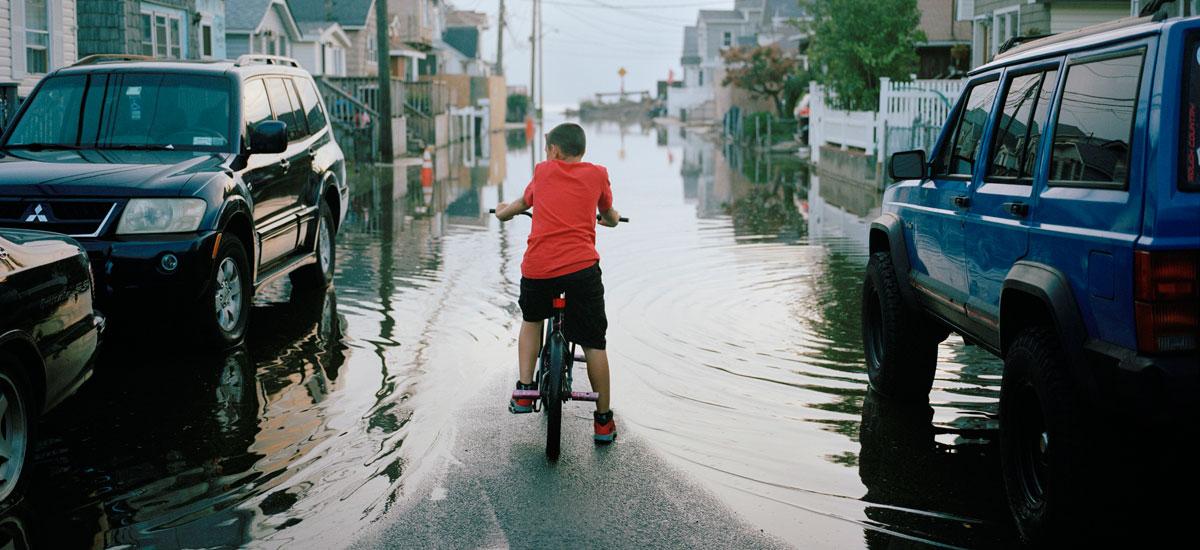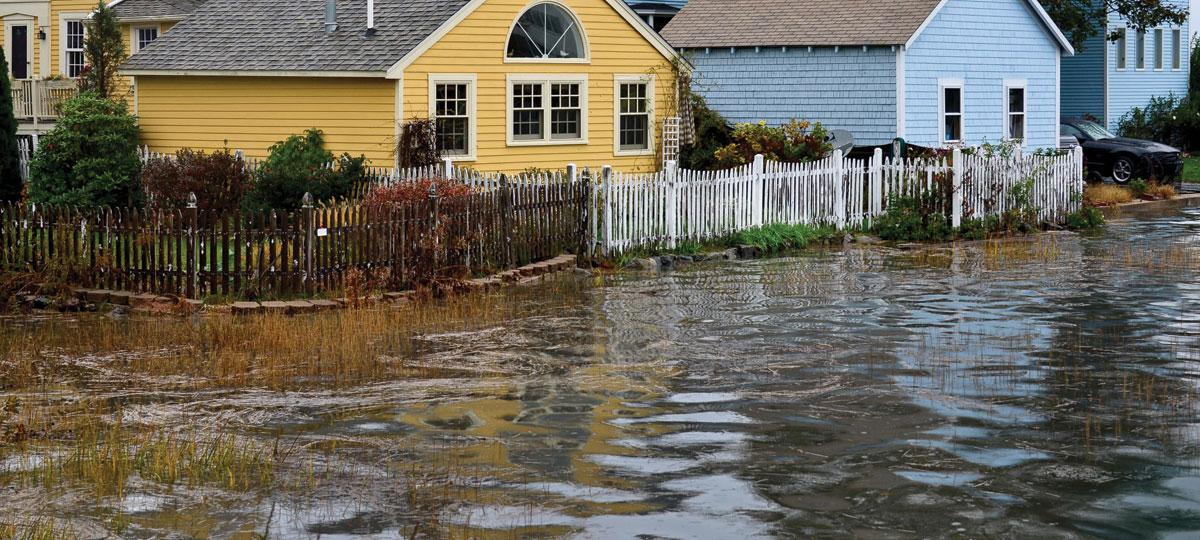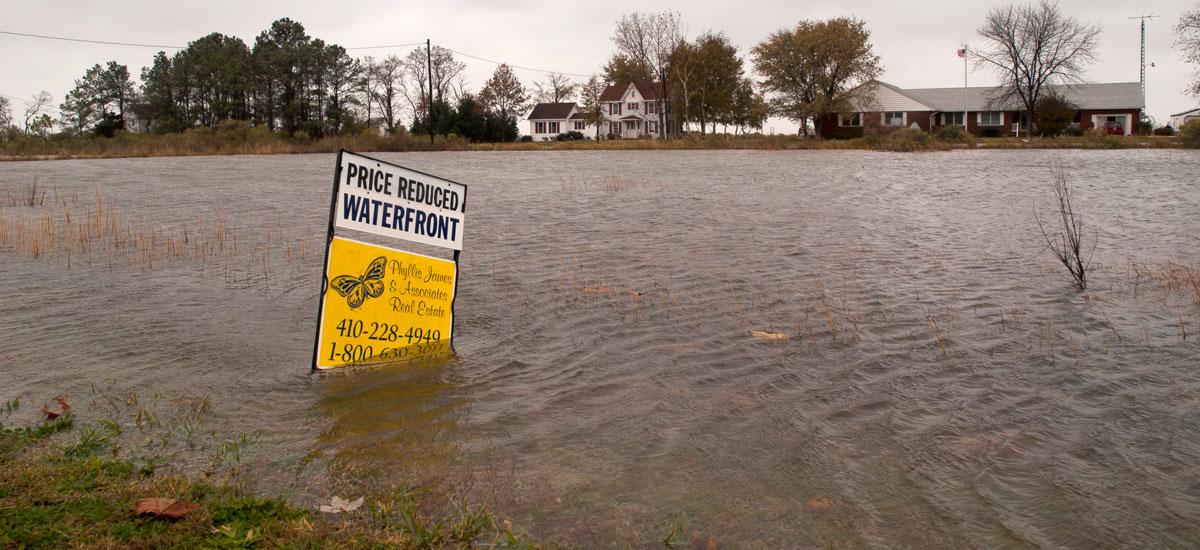If you are considering buying property in a coastal community, it's in your best interests to fully investigate the risks from tidal flooding, both today and in the future. After all, buying a home is one of the biggest investments you will ever make—make sure you're as informed as possible before you make a decision!
To help you get started, this brochure outlines the key questions you should ask realtors, local residents and officials, home inspectors, and others to help you assess the risk. You can read the brochure online, or use the printer-friendly version to print a copy at home and bring it with you. (The brochure folds to a compact and easy-to-carry 5.5" x 8.5" size once you've printed it; for best results, print on both sides of a single sheet of standard 8.5" x 11" paper.)

What is tidal flooding?
Ocean tides rise and fall, generally twice a day, as part of the regular rhythm of the sea. Sometimes, because of the position of the sun and moon, high tides rise higher than usual and reach farther inland as a result. When this happens, tidal flooding can occur as water reaches roads, neighborhoods, and properties that are otherwise usually dry.

Tidal flooding and sea level rise
Global warming is causing sea levels to rise at an accelerating rate. Over the coming decades, this will increase the frequency and extent of tidal flooding as high tides inch higher and reach farther inland. As a result, many homes and neighborhoods that experience little to no tidal flooding today will face increased tidal flooding in the years ahead. Such flooding can be disruptive, as well as damaging, to homes, roads, and other property in affected neighborhoods and communities.
It's a challenge that many coastal homeowners will have to deal with sooner rather than later. Indeed, by 2045—within the lifetime of a 30-year mortgage issued today—UCS research shows that more than 300,000 homes in the lower 48 states with a market value of about $120 billion could be at risk of chronic, disruptive tidal flooding (experiencing 26 or more tidal floods every year) as sea levels rise. As tidal flooding worsens and begins to routinely disrupt everyday life, property values could decline in affected areas.
You can learn more about which coastal areas are at risk, and when, in the analysis, Underwater: Rising Seas, Chronic Floods, and the Implications for Coastal Real Estate.

Know your risk
You probably put a lot of time into researching the school system, crime rates, and other community characteristics that will have a long-term impact on your property value.
Shouldn't you put the same effort into learning about tidal flooding risks? The future value of your home could be at stake.




